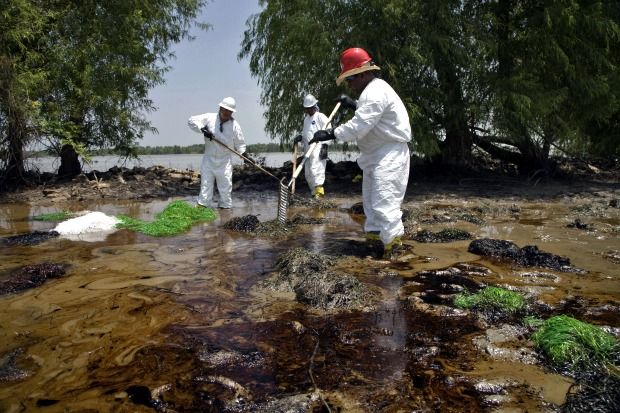
QUESTIONS ABOUT HYDROCARBON BIOREMEDIATION

| Bioremediation of hydrocarbons, from oil spills or stormwater run-off, may take from a few hours to several months or longer, depending upon the initial contaminant, level of contamination, temperature, the type of soil, the availability of oxygen in the area and the ability of the microbes to reach the contaminant |
Some Frequently Asked Questions about Bioremediation |
||
|
How does PETRO-CLEAR for hydrocarbons and bioaugmentation differ from natural weathering? Why are Nutrients important in bioaugmentation? Phosphorus, in the form of inorganic phosphates, is used by the microorganisms to synthesize phospholipids and nucleic acids and for the energy transfer reactions of ATP. Enzymes that hydrolyze phosphate ester are present in nearly all organisms. Without adequate phosphorus, the ability of the bacteria to utilize hydrocarbons in the soil is sharply decreased. Will the PETRO-CLEAR for hydrocarbons need to be exposed to oxygen? Oxygen is the key. Four pounds of oxygen are required for one pound of hydrocarbon to be remediated. Much of this requirement will come from the atmosphere. If the ground is compacted, the ground should be tilled or raked to allow as much oxygen as possible to permeate the soil. The hydrated Petro-Clear can then be sprayed over the tilled soil. For best results, a moisture content of 30 to 40% of the soil's holding capacity should be maintained (this equals around 9% for Texas sands, up to 23% for loams). The soil should be kept moist by adding fresh water. Would a pilot test need to be conducted to determine if this strain of bacteria will feed on the hydrocarbon present? Generally, no pilot test is needed on hydrocarbons. As long as the microbes come into contact with the contaminant, remediation is a straightforward process. Several strains of bacteria are used in our formulations. The problem is never with the bacteria strains, but rather with the inhibitory factors in the environment. Our company will provide technical support to help you identify factors that may be may be inhibiting your process and provide solutions to maximize the effectiveness of our products. What if the area is high in sodium? How long will a typical clean up take? This depends on the contaminant involved and it's concentration levels. Bioremediation bacteria may take from a few hours to several months or longer, depending upon the initial contaminant, level of contamination, temperature, the type of soil, the availability of oxygen in the area and the ability of the microbes to reach the contaminant. It can range anywhere from few hours for simple gasoline spills to several months for complicated crude oils. Should I test for TPH when using bioaugmentation? A more exacting identification of hydrocarbons in soil and NAPLs can be made using fingerprinting methods such a gas chromatograph followed by a flame ionization detector (GC/FID) (Zemo, Bruyaand Graf, 1995). Product information about PETRO-CLEAR for hydrocarbons - bioremediation Bacteria |
|
Hydrocarbon remediation Hydrocarbon FAQ's Landfarming Microbes Product Info